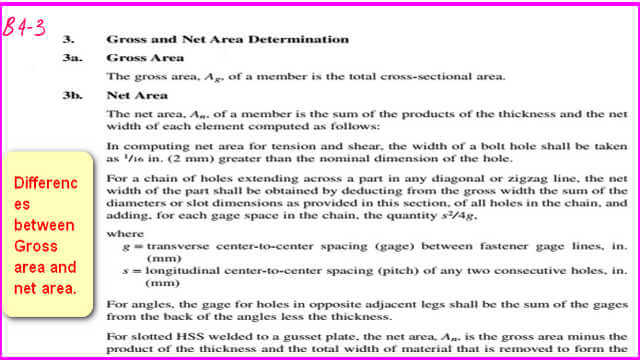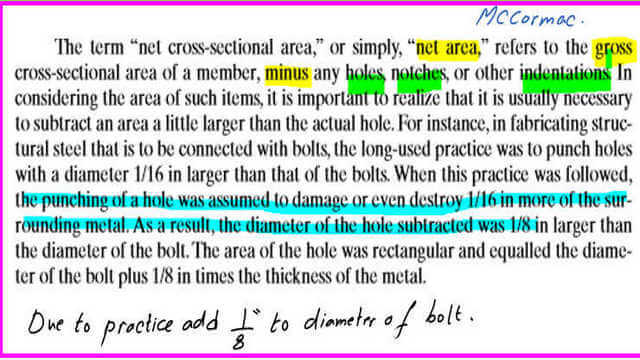Last Updated on October 20, 2024 by Maged kamel
Tension members-part -2.
In this post, Tension Members, part 2, we will discuss gross, net, and net effective areas. What is the difference between pitch and gauge? How do we estimate the diameter of holes considered for the design of tension members?
How do we estimate the net area of tension members?
The following topic concerns gauge distances if we have a single angle with four bolted connections arranged in two gauge lines.
Assume the applied force acts at the angle’s centroid. The first and second lines of fasteners are arranged in the same direction as the applied force.
The first and second gauge lines have two fasteners. The vertical distance between them is the gage distance, represented by the symbol g. It runs perpendicular to the direction of the force.
The inclined distance joining between the two fasteners, denoted as D1, has a horizontal distance in pitch distance S1, while the vertical distance component is gage g.
The edge distance, known as ED1, is measured from the center of a hole to the nearest edge. This value is the horizontal distance.
We can get the net width, which depends on the route of bolts; if our section is vertical, we will deduct the hole diameters from the vertical width depending on the number of bolts we face.
To get the net width while working with a zigzag line distance between the bolts, add S2/4 g, where S is the longitudinal distance as a center-to-center spacing, and the gauge g which is the transverse distance, and deduct the hole diameters for bolts that the section is cutting.

Discussion of net area Term.

The following post is titled: An easy approach to Table 2-4 for various steel elements.
For a helpful external Chapter 3 – Tension Members– Bartlett Quimby

